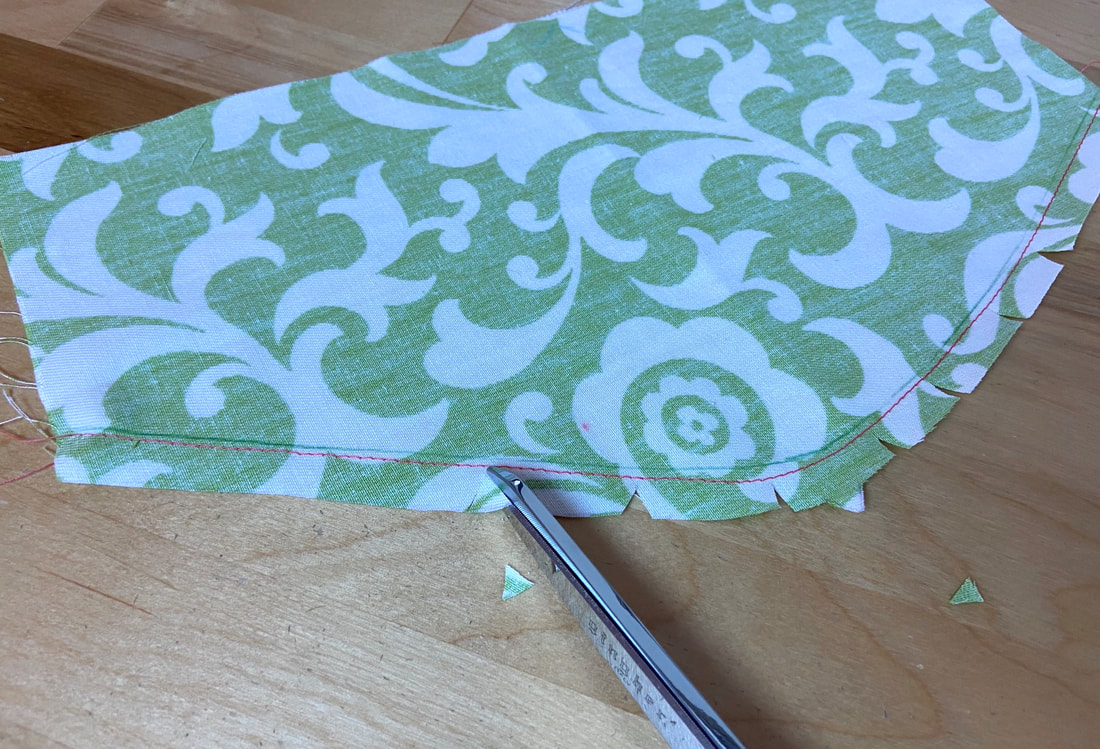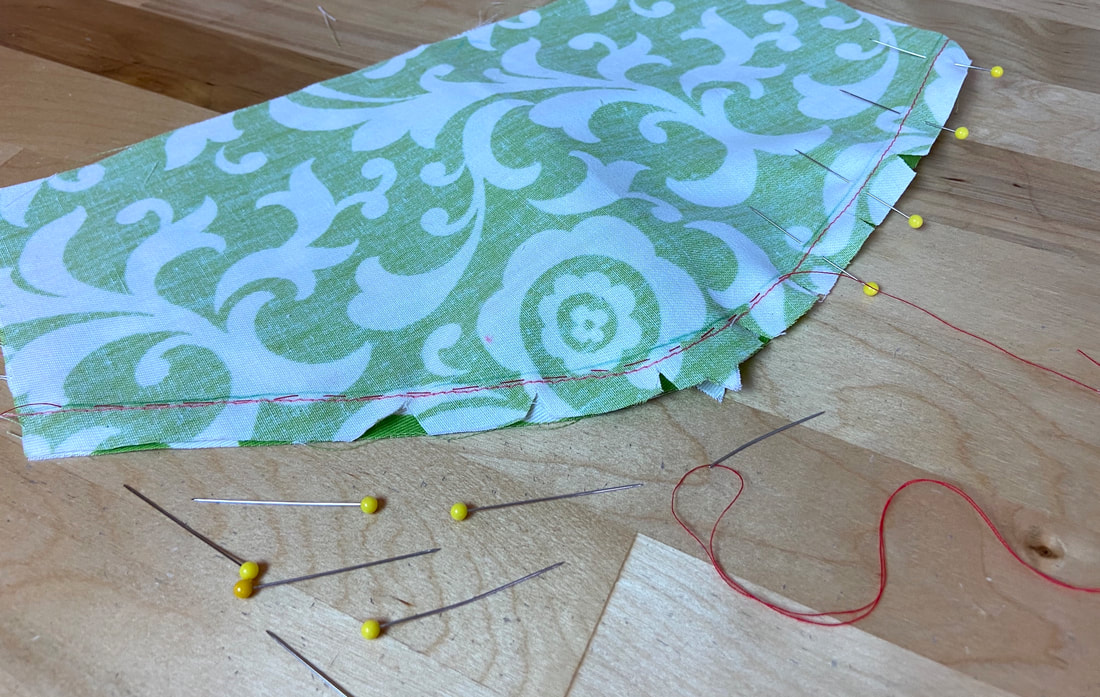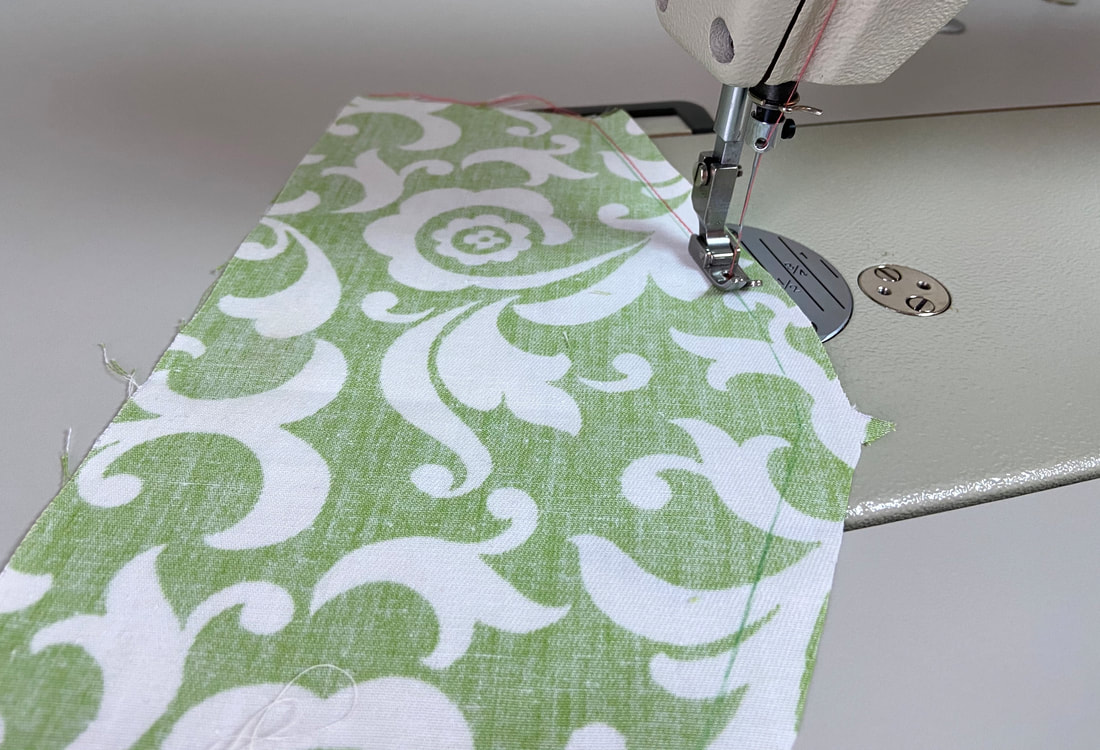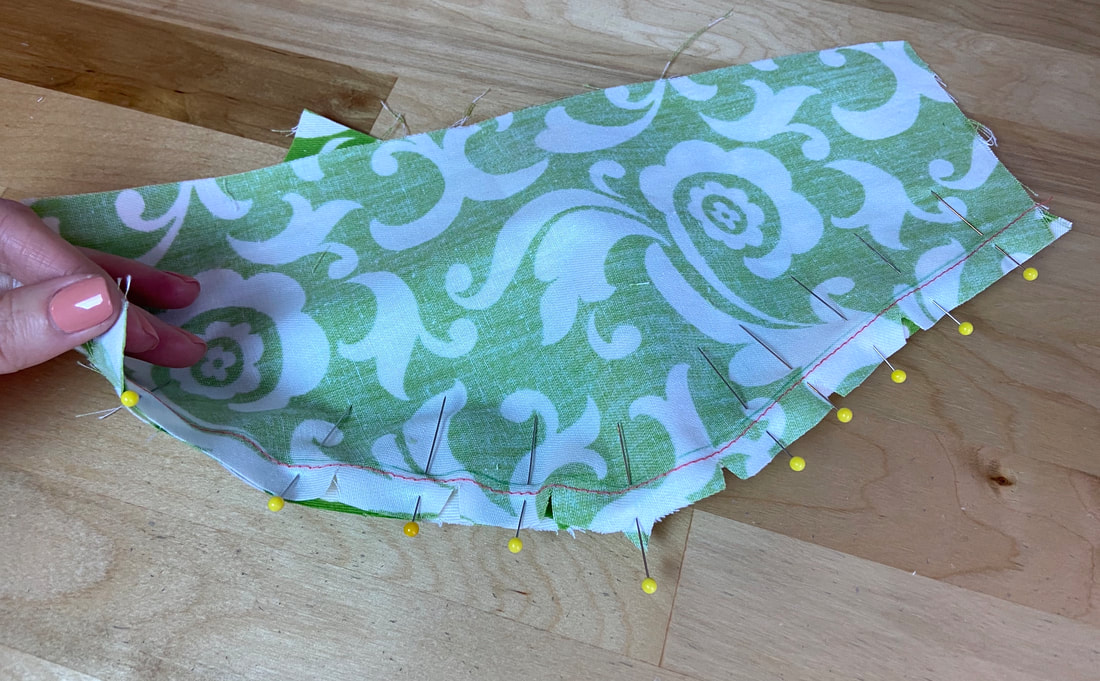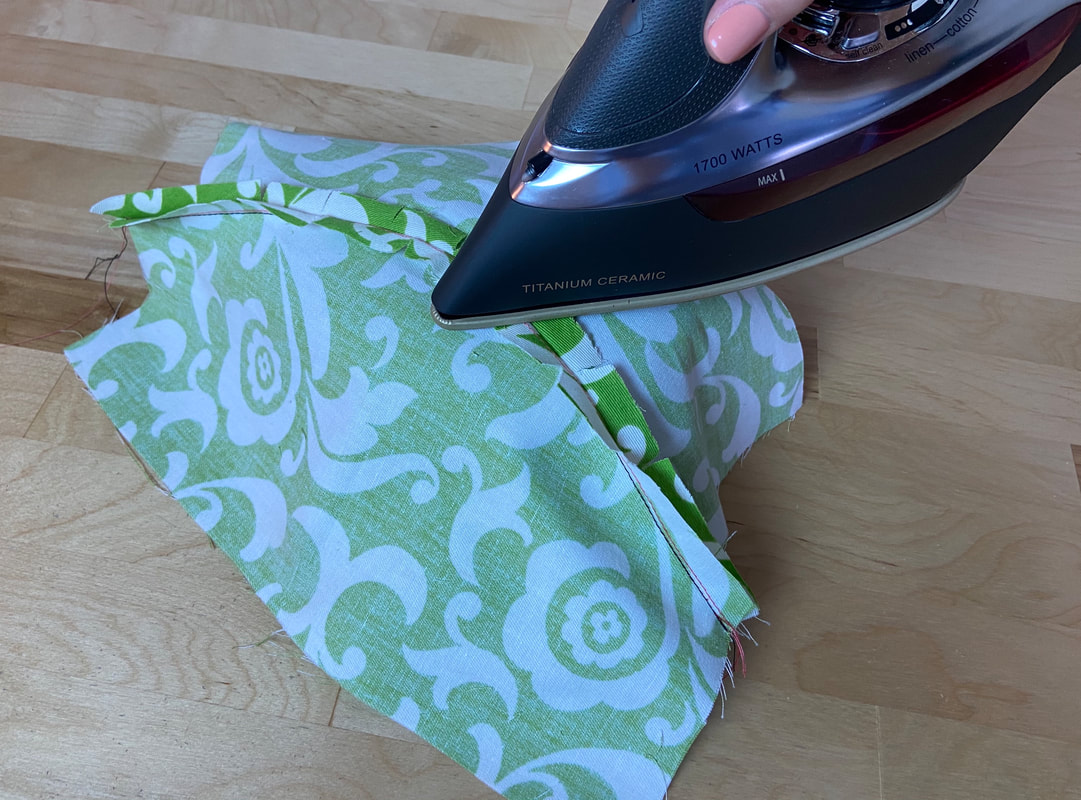What Are Curved Seams
As opposed to straight seams, curved seams are a bit more difficult to sew.
Stitching a curved seam requires the fabric layers to be smoothly shifted during the process in order to achieve a smooth curved stitch, positioned at exactly the same distance from the edge throughout. While practice is the best way to improve and speed through sewing curved seams, there are a few other elements that will facilitate the process. Here are some of them:
- When sewing curved seams, always use a slow machine speed. Doing so will allow you an easier way to smoothly shift and adjust the fabric edge against the seam allowance guide line.
- When sewing edges that are very curved, it may be necessary to walk the machine needle by hand in order to keep the stitching smooth and evenly positioned from the fabric edge in.
- Use a shorter stitch length. A shorter stitch length provides more control and will allow you more flexibility when curving the fabric edges under the presser foot.
- If your sewing machine allows it, invest in a separate seam allowance gage. This separate hardware is curved and positioned at any desired seam allowance to help guide the curved fabric edge(s).
In the sewing process, you will come across both inward and outward curves. Some are more pronounced than others.
Naturally, the more pronounced the curved seams are, the more difficult it will be to machine stitch them. While both take extra care to sew, inward-curved seams will sometimes feel a bit more difficult to manage.
In dressmaking, you will also stumble upon two slightly complicated curved seams: One requires opposite curves to be stitched together, the second entails sewing a curved edge to a straight edge.
These scenarios can feel a bit intimidating for sewing beginners; luckily, there are a number of techniques you can use to prepare each fabric edge prior to aligning and stitching the seam. These preparation steps will significantly facilitate the sewing process resulting in more uniform, smooth seams.
Sewing A Curved Edge To A Straight Edge
For best results, sewing a curved edge to straight edge requires a couple of preliminary steps. If you attempt to align and pin the two edges together as is, you’ll find that regardless of whether the curve faces inward or outward, it can be quite frustrating to match it to a straight edge. Here’s what you should do:
Leave the straight edge as is, and apply the following to the curved edge:
1. If the edge is an outward curve, staystitch the curved edge next to the seamline (but within the seam allowance) as shown. Learn more about staystitching in this tutorial: Staystitching
2. Clip evenly-distributed, triangular wedges into the curved seam allowance stopping at the staystitch line. Don’t cut through the actual stitching.
The number of wedge cuts needed depends on how curved the fabric edge is. The sharper the outer curve, the more densely positioned the clips should be. However, do not add too many cuts along fabrics that are loosely woven or highly fraying.
Learn more about clipping seam allowance for bulk and tension release here: Notching/Clipping Seam Allowance for Tension Release
3. Align the straight edge to the curved edge with the face sides touching. Match all existing notches in the process and insert pins perpendicular to the edge.
As you align and pin the seam, the clipped wedges will allow the outward curve to extend and easily mold to the shape of the straight edge. The removal of the extra seam allowance not only adds flexibility to the curved edge, it also eliminates bulk and draws in the cut edges together for a smooth, flat finish in the final seam.
4. For added stability during the stitching process, hand baste the seam edges next to the seamline as shown.
5. Machine stitch at the designated seam allowance. Backstitch at the beginning and end of the stitch.
Remove the hand basting once complete.
6. As a final step, iron the seam over a tailor's ham or sleeve board.
Sewing Opposite Curved Fabric Edges
Sewing opposite curves requires that both edges be notched to encourage the final seam to lay flat. As noted in the example above, the outward-facing curve should be notched prior to aligning and pinning the seam. The inward curve will be clipped for tension release after the seam has been stitched.
1. Staystitch the outward curved edge at a small distance from the seamline as shown.
2. Clip wedge cuts from the edge to the staystitching, making sure not to cut through the actual stitch line. These wedge notches will provide flexibility and eliminate bulk by pulling in the cuts together when the edge is extended.
3. Lay the notched outward curve on top of the untreated inward curve with face sides touching, and pin the seam together matching all existing notches and marks. Insert pins perpendicular to the edge to keep the fabric layers aligned.
4. Hand baste next to the seamline for extra stability during the machine stitching process.
5. Carefully stitch the curved edges at the designated seam allowance.
Once stitched, remove the hand basting.
6. To allow the seam to lay flat and eliminate strain and tension, add evenly distributed slits into the seam allowance of the inward curved edge (un-notched edge). Doing so will cause the slits to separate into wedge-like shapes providing flexibility, movement and flatness in the finished seam.
7. To complete the seam, iron the curved seam over a tailor's ham.
To learn more about staystitching, check out this tutorial: Staystitching
To learn more about clipping and notching seam allowance for bulk prevention and tension release, check out this tutorial: Notching/Clipping Seam Allowance for Tension Release





